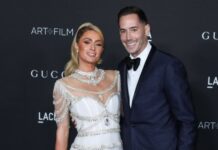What’s the easiest plant to grow? How do you know when you’re underwatering — or overwatering?
It is no secret that many people have started planting and gardening during the pandemic-yes, even those with brown thumbs. If you are new to this and have been working hard to keep your plants alive, don’t just be green and bear with it-we got some tips from a plant lover who has been in gardening for decades.
Meet Darren Ng (pictured below), who turned the terrace of his shophouse into a verdant mini jungle filled with more than 300 plants (check out his garden tour here).

The 52-year-old handles global processes at Swarovski and is one of the community garden leaders of the Siglap South CC community garden. He has been working in the gardening club since he was school.
Here are some basic gardening tips from Darren to help you keep your home garden prosperous.
1: If you don’t plan, you will fail.
“If you are just starting out, you really need to know what you can handle and read the plants before you buy,” Darren told 8Days. “Understand the family conditions you can give plants, for example, whether you will put the plants indoors, on the balcony or in the garden. Then go find the plants you like.”
He advises against spending big prices on fashionable plants, such as variegated monsters that can cost up to $2,000. “Some newbies just buy expensive plants, the price of two leaves is about $500, and hope it can [survive]. Buy cheaper things first-there are many cheap plants that still look good.”
2: A fail-safe, easy to grow plant that costs less than $10.
According to Darren, Indian borage is “probably the easiest plant everyone should try to grow.” He added: “It’s about $6 per pot and it’s easy to find them in the nursery. It grows everywhere. I just throw it somewhere and it will grow up. It’s good for the throat. If you cough, you can. Pick a few leaves and put it in hot water to drink. It has a nice mint flavor, but it is easier to grow than mint.”
3: Brown leaves may be a sign of excessive watering or flooding. This is the way to distinguish differences.
The leaves of your plant have turned yellow. You ask Google for help. Many websites will tell you that brown leaves mean your plants are overwatered or submerged, which is not very helpful.
Darren explained: “Yes, overwatering and watering do have similar symptoms-the tip of the leaf turns yellowish or brown. But the brown part has a different texture [depending on the problem].
“If you water too much, the brown parts of the leaves will feel a little mushy. But if you are already underwater, the brown parts will be a bit brittle. So all you need to do is feel the leaves.”
4: Found spider mites on your plant? This is what you should do.
At some point in your gardening journey, you may have to face red spiders, one of the most common pests for plant owners.
“When the conditions are too hot and too dry, spider mites can occur,” Darren said. “Small white spots will appear on the leaves. In severe cases, almost the entire leaf will turn white. It is more obvious from the back of the leaves, so turn the leaves over to check for spider mites. The mites themselves are like small black spots, but they make the plant There are many white spots on the surface.
He recommended several methods to remove Starscream.
“If it is serious, I will remove the whole leaf. But if it is a mild infection, if you want to use organic matter, you can use neem oil. Otherwise, you can use sulfur soap and mix it with water and spray [ In the affected area].”
5: There is no one-size-fits-all plant care guide.
Serious novice plant owners will search the storm on Google to find out various ways to care for the plant, from how often to water it to which fertilizer to use. But it is important to know that “the same plant under different conditions may have to be treated differently,” Darren points out.
“Before you buy a plant, it is best to understand the conditions it needs, and then customize it according to your environment.
“Some people may say that a certain plant is watered every two to three days, but it depends on whether it is indoors or outdoors. If it is indoors, it may need to be watered every two to three days. But if you put the same The plants are placed outside with better ventilation, and you may need to water them every day.”






